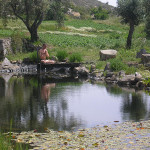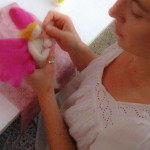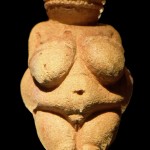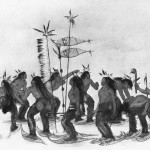What is Art, Leo Tolstoy
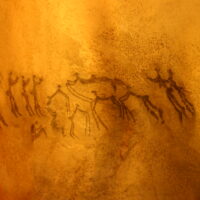
An artist’s self-reflection
Perhaps all classical literature lovers are well familiar with the famous Russian author Leo Tolstoy. Among his most known artworks, which are considered masterpieces, are Anna Karina as well as War and Peace.
Tolstoy also wrote nonfictional texts that are more personal and introspective in nature. These contemplate Orthodox religious ideas (Russian Orthodox Church). They included “What I believe” (1885) and “What is Art” (1897).
In the work “What is Art”, Tolstoy questions his life’s work which has been dedicated entirely to his art. He questions the core meaning and purpose of creative expression, as well as the art-industry, as a whole.
Perhaps, all artist have an intimate relationship with the question ‘What is art?.’ Perhaps we may not find any deep value in the conclusions which Tolstoy has reached in his written observations. It may be that these ideas, some or all, may seem to us very old-fashion, outdated and even simply wrong. However, even if they assist us to find, that which we do actually feel and believe in, through this exploration, then certainly we can still find value in them. For even if we reach completely different conclusions through reflecting upon the thoughts of such an influential artist, they may still serve us and be worthwhile even today.
Essence of Art
In the text ‘What is Art’, Tolstoy shares that for him, the essence of art is communication. Art is a means for communication; communication between the writer and the reader, the author and the crowd. In his view, art is essentially a form of education and should be a way to share wisdom. To him, in this way, art is similar to religion, and is due to replace the classical form of religious education.
Tolstoy writes and shares with his reader a personal incident where he went to the backstage of an opera house. Seeing the rehearsal for a great performance with all the grand preparations for the show involved, he was profoundly affected by all that he saw and the feeling it evoked in him. Dumbstruck, he is shaken to his core and this drove him into deep contemplations about the very meaning of art.
As he is moved by the sights all around him in that backstage, he form several significant questions which he sought to answer:
Morality – Tolstoy wonders, ‘Is what I see before me moral?’
Furthermore, Tolstoy sees the dances and performs, including half-naked women. This is very striking for him. It seems to him very immoral and he questions ‘can we sacrifice morality for the sake of art?’
Observing all the effort made by the many workers that are involved in the making of this artwork: all the carpenters (that build the stage), the tailors and dressmakers (which create the costumes), all the dances, the singers, all the people that he sees working so very hard around him, lead him to wonder what is all their effort for?
And then, upon hearing all the anger and metal abuse they undertake due to the rehearsal, the deadlines, the critics and the harsh demands of the manager and director, their rage and rudeness – he asks: is this agreeable and acceptable for the sake of art?
His key inquiry is “who is all this for?”
Is Art made for Art sake? If art is created for its own sake only, is this enough, is it acceptable?
Art for Art’s sake
Shattered by the instance, Tolstoy finds himself repulsed, disgusted and sickened by the art industry. That very industry that he himself is of course part of and has been part of for many many years. He is ashamed and disgusted not only with artist, but also with art lovers and consumers. He is in fact disgusted at the core with himself.
Tolstoy takes no refuge and shamelessly expresses loathing towards a large list of very respectable and great artist. These include Shakespeare, Beethoven and Wagner. Not only does he share his disgust towards them, but also towards their crowds, their followers and anyone that appreciates their work. He does not hold from criticizing from his own work, and he wholeheartedly scorns his own writing which are considers masterpieces, such as Anna Karenina.
Art and Religion
In those days, art had a small social religious role or purpose. Tolstoy sees this as a deterioration of art and he longs to see the return of such ideals. He finds himself wondering about Plato’s Republic and is fascinated by the concept of having only art which is serving the goal of particular religious teaching.
Tolstoy claims Art must be moral. Furthermore he places great importance on the fact that it must create “brotherhood” among people. It must connect us to humanity.
Art must be nurturing just as food for the body, art for the soul, must not attempt for mealy pleasure or attractiveness, it must nurture and support us to grow. According to Tolstoy, this can be achieved if we stay loyal to the essence of human feeling and communication that transcends time and place.
Sincerity – Art must be sincere. Tolstoy loathes the upper class, the aristocrats that care for nothing but their own meaningless lives. It is obvious that he himself the aristocrats that he loathes and so are the characters that fill his books (as we may all remember from Anna Karenina). Disregarding the poor and the lower class, they are filled with pride, lust and greed, living for themselves, caring only of their social name concerned with their petty boring worries, thoughts and meanings.
Tolstoy describes – what is art not:
- Art is it not merely beauty or pleasure
- Art is does not stay merely on the physiological level – while this may be the source of our creative ability it is by no means what makes art art.
- Art is not only sounds, colors, words, an expression on a practical level which includes emotions. While these may be included, in itself it is not enough to touch the reader, while art essentially must connect with its readers / viewers.
- Art is not simply a form of entertainment, for both to the creator and the consumer of art. Tolstoy sees the circus, magic-shows, gymnastics acts and other such performances as mere entertainments, while art can be in fact sad, harsh, bitter, brutal and not necessarily fun.
For art to be art it needs to be more then these. While many things can be related to art, they are not art per se.
Art Is
Tolstoy claims: Art is the foundation of human life
Communication is it’s base, the purpose of art: communication between people of feelings and emotions, which create a human connection. Communication and sharing of one person’s emotion with another human, has an effect. This effect Tolstoy refers to as “infected emotion”.
Communication between the artist and the public is deeply important and transcends time and space, throughout history. In this way art is a bridge, between those that are no more, those alive today and those that have yet to be born.
Tolstoy is actually using the text for self-reflection and to evaluate of his life, and his lives work. At the age of 69 (which back then was certainly considered an old man) he finds himself ashamed with his “hollow” or insincere work. He has a moral religious life crisis.
What is art can be understood as his own autobiography and critic of his creative work and life as an artist. He continue to an inclusive social evaluation of the art world he knows so well.
Tolstoy longs for art to stop being harmful and violent and put upon its pedestals the goal of connecting fellow humans with one another and create care, a sense of unity and love.



